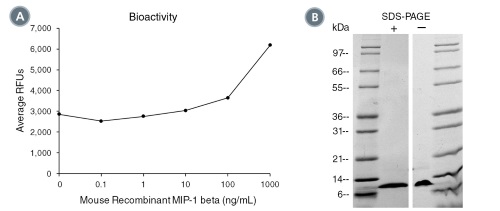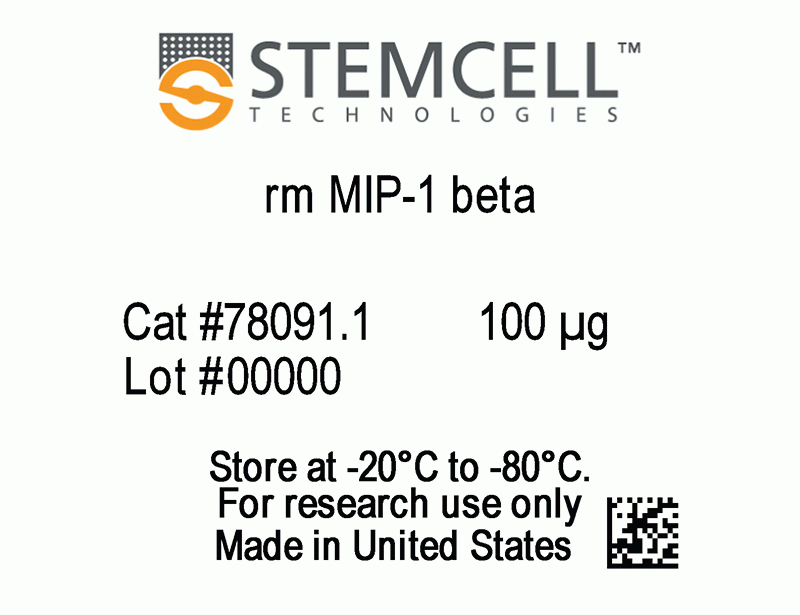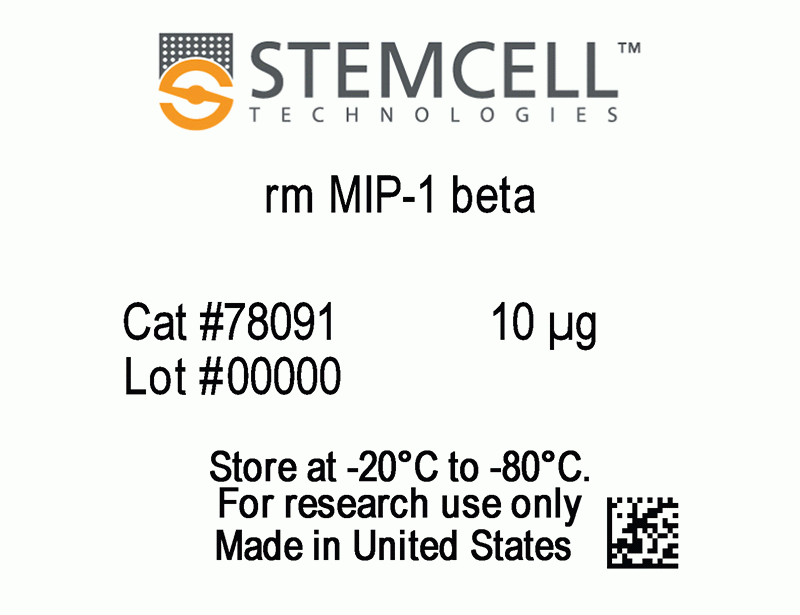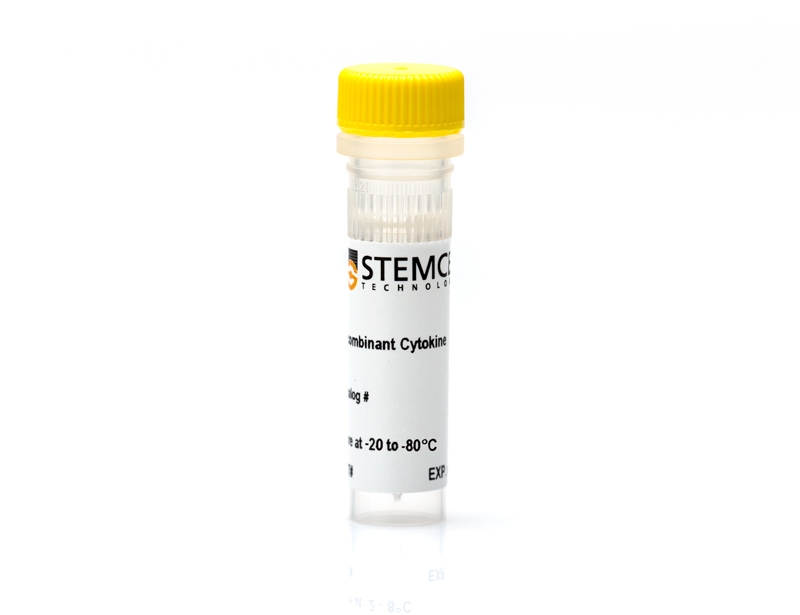概要
技术资料
| Document Type | 产品名称 | Catalog # | Lot # | 语言 |
|---|---|---|---|---|
| Product Information Sheet | Mouse Recombinant MIP-1 beta (CCL4) | 78091, 78091.1 | All | English |
| Safety Data Sheet | Mouse Recombinant MIP-1 beta (CCL4) | 78091, 78091.1 | All | English |
数据及文献
Data

(A) The biological activity of Mouse Recombinant MIP-1 beta (CCL4) was tested by its ability to induce chemotaxis of THP-1 cells. Cell migration was measured after 45 min using a fluorometric assay method. Increase in migration over basal level was seen starting at 100 ng/mL. (B) 1 μg of Mouse Recombinant MIP-1 beta (CCL4) was resolved with SDS-PAGE under reducing (+) and non-reducing (-) conditions and visualized by Coomassie Blue staining. Mouse Recombinant MIP-1 beta (CCL4) has a predicted molecular mass of 7.8 kDa.

 网站首页
网站首页




